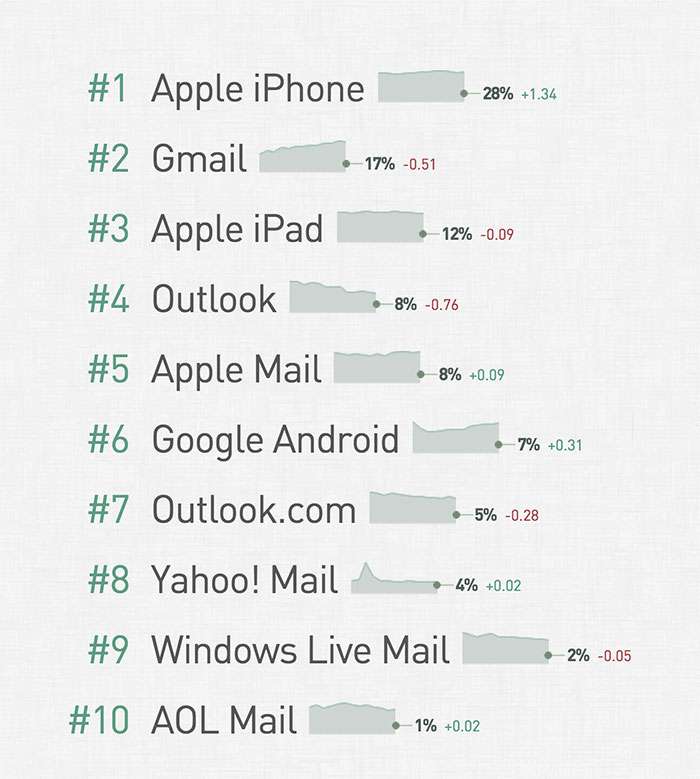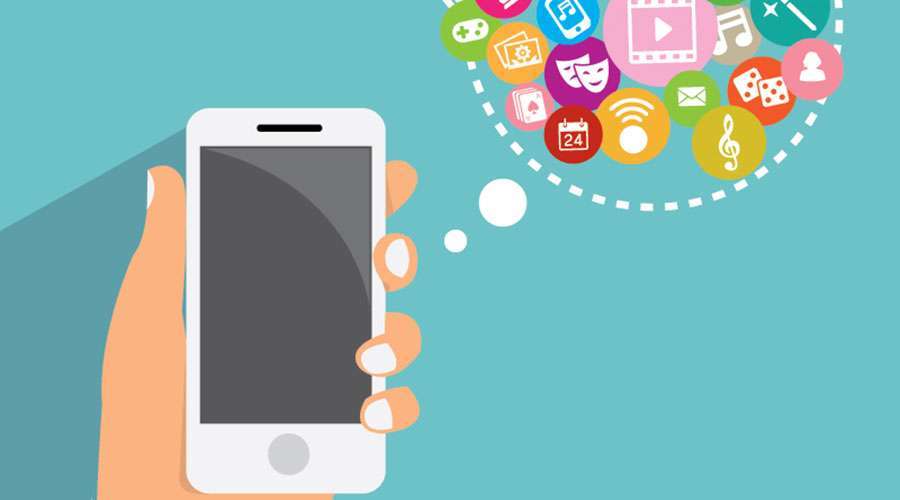Email marketing is not dead, it’s here to stay and if you think that it’s not worth using, you should think again. Email marketing is one of the most powerful digital marketing tools for business, so there’s a reason why inboxes all over the world are full of promotions and news bulletins. It’s because email marketing works. Here are some reasons why we love email marketing and you should too.
But First – Some Statistics
1. In 2013, there were almost 3.9 billion email accounts worldwide (the The Radicati Group report). That number is expected to increase 4.9 by the end of 2017. 2. A whopping 48% of emails are opened on a mobile device (Litmus). As of March 2015, the Apple iPhone email client was the most popular (emailmarketshare.com).

Calculated from 1.06 billion opens tracked by Litmus Email Analytics in March 2015
Why we love it
I’ll admit it. In the early days of Shortie Designs, I was the first to roll my eyes at the thought of email marketing. ‘Evil’ I would say. The thought of pestering people in their inboxes made me feel uneasy, I didn’t see how a digital agency could benefit from sending regular email bulletins, we weren’t really ‘selling’ anything and I was more comfortable focussing on engaging with our customers. Here’s the thing, email marketing isn’t just about selling, it can be about engaging, you just have to do it right. At Shortie Designs we love staying on top of trends and sharing important resources to help our customers. As we grew, we quickly realised we needed a way to easily share articles, information and updates with our clients that went beyond just posting on Facebook. We needed it to be personalised and track the performance of the content we were sending. Email marketing platforms provide that in a way that social media can’t. I also realised that our campaigns were not product based, they were information and content based. So we started the journey of email marketing. Even for a humble company like ours, we still see the benefits, and our clients do too. Your story may be different, but whether you have an online store, a local fruit shop or are on the executive committee of a Non Profit or Corporate Agency, email marketing is still one of the best ways to connect to the people who access your business.
Some of the challenges
- Knowing what to write about: When you’re selling products, this is much simpler. When it’s content based, working out what to email can be tricky. Connect your audience to your blog, or to other resources/events/information around the web, demonstrate that you’re a trend watcher, a collector of information so they see your relevancy.
- Creating a publishing schedule: Map out your email campaigns quarterly to match your other marketing campaigns. This helps you stay flexible with the content for the remainder of the year, and takes the pressure off having to come up with everyone at once.
- Writing good email copy: This is probably the hardest, start collecting other email campaigns from within your industry and pay attention to their tone. What gets your attention? What inspires you to read, click or purchase?
Most importantly if writing your email marketing campaigns isn’t your strong point, hire someone to do it for you.
Tips for using it well
- Don’t make it about the hard sell: Even if you are selling products, get creative and avoid spammy subject lines and tone. People get turned off very quickly if you’re trying to be forceful. Use the power of story and intrigue to get their attention (see below).
- Write a good story: If all you’re thinking about is getting your audience to click on a link, then you’ve missed your opportunity to connect. Competing for attention is hard, which is why savvy users are no longer lulled into sedation with pretty pictures and click bait titles. Give them something to connect to. The email is just one part of the customer’s journey through the sales cycle. Use intrigue, find a new angle and give them a reason to want to read your email.
- Make the click count: Once they click to your product, blog post or whatever your offer is, make it count. Make sure you have clear call to actions to direct your customer through the final part of their journey. Whether it’s a type of offer at the end of a blog post, a customised landing page for your product or a damn fine article just have to share, make it count. Don’t waste their time (or yours).
- When to use it: To promote specials, sell products or services, for news, to share resources, for business and operations communication, to get feedback from your customers.
Analyse, Analyse Analyse
Don’t be kept in the dark about how your campaigns are performing, make sure whatever platform you’re using provides comprehesive reports about:
- open rates
- click through rates
- ecommerce analytics
- Google analytics
- share rates
- subscription growth stats
Plenty of platforms do this including Mailchimp, Campaign Monitor, Aweber, Get Response and Constant Contact.
Key Takeaways
- Emails are still one of the most powerful ways to connect with customers, so leverage it to your advantage.
- Work out what you’re offering and how you can present it in a way that will engage your customers
- Tell a story, don’t just sell a product or service, create a journey that will intrigue your customers.
- Analyse, track and fine tune, use your reports to tweak your campaigns to get better engagement.
